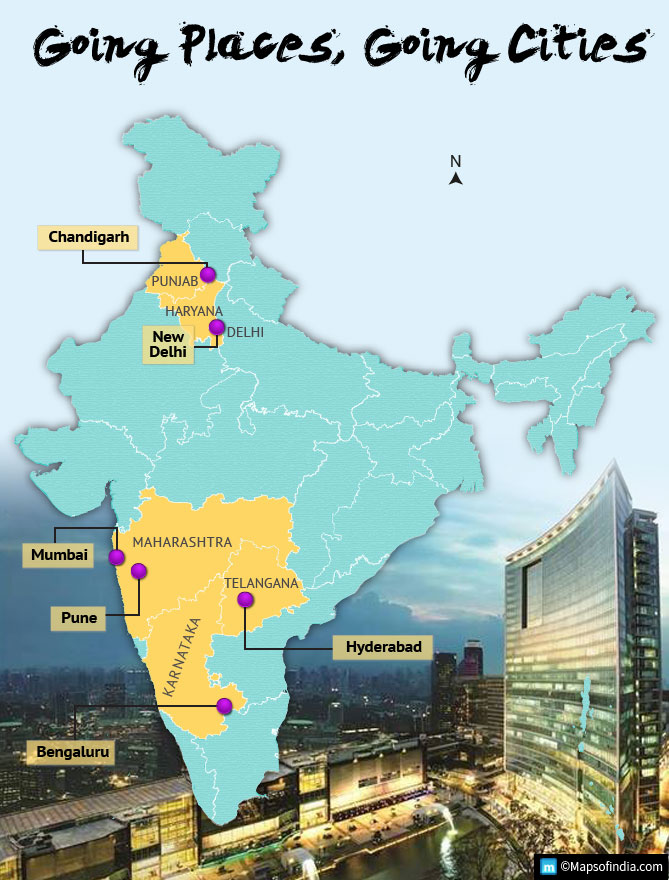India approved the Paris Pact on 2nd October, 2016, and with this it reaffirmed the fact that it was concerned with the well-being of nature and aimed to provide it the best care possible. Prime Minister Narendra Modi stated that this was integral part of the Indian belief system. By agreeing to become a signatory to the agreement, India also professed that it would do everything in its power to limit the negative effects of climate change. India happens to be the third biggest emitter of greenhouse gases in the world. India’s participation in the agreement means a big fillip for the agreement that is expected to be brought to effect by the end of 2016 itself.
Formalities
The Instrument of Ratification was first signed by President Pranab Mukherjee and then the same was handed over by Syed Akbaruddin, Permanent Representative of India to the UN, to Santiago Villalpando, who happens to be the Head of the Treaties Division, the UN.
These formalities took place at a special ceremony where leading diplomats and officials from the global body were in attendance. The ceremony was organized to mark the 147th birthday of Mahatma Gandhi, the Father of the Nation.
Governmental commitment
The National Council of BJP had met recently on the birthday of Deen Dayal Upadhyay at Kozhikode. Here, PM Modi had reiterated that India needed to sign the Paris Pact and promised to do it on 2nd October, a promise that he has kept.
International appreciation
The decision has been lauded by several countries around the world. President Barack Obama was highly appreciative of this decision by the Indian Government to become a part of the Paris Pact. He has also said that with this decision both Modi and the Indian people have taken forward the glorious lineage of Mahatma Gandhi. France, too, has warmly greeted India for this decision stating how it has brought both the countries closer.
What is the Paris Pact?
The Paris Pact or Paris Agreement on Climate Change is regarded as one of the most important members of its kind in terms of impact and scope. It is expected to be the most far-reaching of its kind. When it comes to effect it will make sure that each and every economic activity in the world is done keeping in mind the critical issue of environmental well-being and the objectives formulated to mitigate the negative effects of climate change.
How will it affect us?
This means that in India, just as it would in every other country of the world, it will affect the way we live, the way we travel, our food, our clothes, our activities in our professional and personal spaces, etc. It is not that all the changes would be evident to everyone though.
Greater use of solar power
It is expected that there would be greater usage of solar power and wind energy to combat climate change. By 2022, India is looking to install the capacity needed to generate 100 GW of electricity by using solar energy. 40 GW of this energy is expected to be raised through rooftop solar installations.
India has also announced plans to install capacity necessary to generate 60 GW of wind energy by 2022. At present, there are several villages that get their electricity from solar and wind energies. It is expected that in the future these forms of energy, along with biogas and hydropower, would be put to greater use in the days ahead. At present approximately 200 million people in India still don’t have any form of electricity. This will be beneficial for them.
Energy-efficient home appliances
As per the Paris Pact, India is supposed to bring down its emission intensity to 33-35% of its GDP by 2030. The benchmark in this case is the standard of emission in 2005. However, the change is underway already. India is committed to making its energy production and consumption processes more efficient.
The homes in India take up 25% of its entire electricity. Government statistics suggest that till date in India three crore families have changed to using LED bulbs that use less energy. These families are using 16.5 crore LED bulbs. It is expected that in the days to come electrical appliances such as air conditioners, televisions and refrigerators would have grown in efficiency.
Transport facilities
A change can be seen in this regard as well with electric cars gradually making their presence felt in the market and e-rickshaws, operated by batteries, seen in many cities. It is expected that after the Paris Pact comes into action, stricter norms regarding fuel efficiency will come into being. India is also expected to bring forward the time for implementing the pollution norms enshrined in Bharat VI to 2020 instead of 2022. Metro tracks are also expected to start running in several other cities. This will address the problem of pollution caused by the older forms of transport.
Greater number of trees
India is expected to increase its forest and tree cover by 2030 to such an extent that it is capable of absorbing 2.5-3 billion tonnes of carbon dioxide. This is being called the carbon sink. This is an ambitious target considering just 24% of India’s land is under forest cover and achieving this target would mean taking it to 33%. Considering how forest land is being used for developmental purposes it can be quite difficult to increase the forest or tree cover. The only substitute for India would be to plant more trees wherever possible.
What is also worrisome in this regard is the relatively-low quality of almost 50% of India’s forest cover. The national government has already been successful in passing the Compensatory Afforestation Fund Management and Planning Authority (CAMPA) Bill. It is supposed to replace all the forests destroyed for one reason or the other. This bill, along with various afforestation drives provides plenty of funds. The Indian Government has also asked for trees to be planted along railway tracks and highways.
More energy-efficient buildings
As per projections India is yet to build 70% of its infrastructure necessary by 2030. This includes new buildings and cities. Even though the focus is on energy-efficient buildings, most of the buildings constructed lag behind in terms of quality. It is expected that soon enough with the Paris Pact buildings will be rated on environmental criteria. As a result, penalties and incentives can be provided on things such as water and electricity bills. The Ministry of New & Renewable Energy has already come out with a programme in this regard named Green Rating for Integrated Habitat Assessment (GRIHA). There is another third-party certification programme named Leadership in Energy and Environmental Design (LEED). It happens to be one of the most well-known programmes for green building certification.
Effect on water resources
It is expected that availability of consumable water is going to be hit if the present rate of climate change is allowed to continue. India is already a country with such issue in several parts. This is why there seems to be an urgent need to improve the ways of utilizing and managing water. Incidentally, some changes are already happening in this regard – it is expected that free water could be reduced in the days ahead. A price is expected to be put and people may not be allowed, anymore, to use the groundwater below their land. Industries are also likely to be permitted to use only treated water.
Effect from a governance point of view
By becoming signatory to this treaty, India would now be able to shape global rules in an era when the climate changes are happening. This is an emphatic statement on India’s part that it will now no more be an ardent opponent on the sidelines it will also wish to play a greater role in formulating the policies. It can also expect to be a part of the 55/55 Conference.
This conference of 55 countries with 55% emissions is expected to write the new rules and environmental policies. This is a marked difference from the years when India was attempting to break in after coming late to the party. It is expected that in the days ahead climate change will affect all aspects of our life such as energy, trade, and technology. With this ratification India has now assumed a proactive role rather than just complaining and stopping. This deal is an important part of the legacy being left behind by Obama and by signing it India has taken a major step.
During June, India had toyed with the idea of connecting its ratification of the aforementioned agreement with its membership of the Nuclear Suppliers Group (NSG). This move was opposed by the likes of John Kerry as well. Arunabha Ghosh, who works for Council for Energy, Environment and Water, states that by approving this agreement India is expected to gain some tactical advantage at the upcoming HFC negotiations to be held at Kigali. This shows that instead of being problem India now wants to be the solution. He has also revealed that companies in India are now looking to come up with patent-free solutions that can act as alternatives to HFC.
It is also expected to provide some leverage at the United Nations Climate Change Conference (UNCCC) talks to be held in Paris, as well as at ICAO where carbon taxes are to be introduced. Moreover, this decision is also in line with the central government’s decision to start the International Solar Alliance, a parallel movement being done on a global scale.






